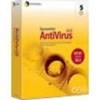Symantec 11281411 Administration Guide - Page 78
Testing con d alert actions, Deleting an alert action from an alert
 |
UPC - 037648327237
View all Symantec 11281411 manuals
Add to My Manuals
Save this manual to your list of manuals |
Page 78 highlights
78 Setting up the Alert Management System Working with configured alerts Testing configured alert actions After you configure alert actions, you can test them in the Alert Actions dialog box. When you select an alert and then click Test Action, all alert actions configured for that alert execute. When you select a specific alert action and click Test Action, only that alert action executes. To test an alert ◆ In the Alert Actions dialog box, select an alert, and then click Test Action. Deleting an alert action from an alert You can delete actions associated with an alert as necessary. To delete an alert action from an alert 1 In the Symantec System Center console, right-click the server group, and then click All Tasks > AMS > Configure. 2 Select the alert action you want to delete, and then click Delete. Exporting alert actions to other computers Each computer that generates AMS2 alerts stores its alert information in a local AMS2 database. Typically, the alerts and actions stored in one database are not visible to AMS2 databases on other computers. There may be times when you want to duplicate configurations of AMS2 alert actions on a computer across multiple computers so you do not have to repeat your work. The AMS2 export option lets you export alert actions to other computers that generate AMS2 alerts. Alert actions, such as a Send Page alert action configuration or a Message Box alert action configuration, only export if the alert for which you configured the action exists on both computers. In most cases, you can ensure this is the case by installing the same application on both computers. This way, both applications will register their alerts with their respective AMS2 databases. When you export alert actions from one computer to another, you have the choice of exporting a single alert action or all alert actions. Once AMS2 exports alert actions to a computer, AMS2 displays the Export Status dialog box to let you know the results of the export. If the export option cannot export an alert action because the alert for which the action was configured doesn't exist on the target computer (or for any other reason), the Export Status dialog box indicates that the alert action couldn't be















